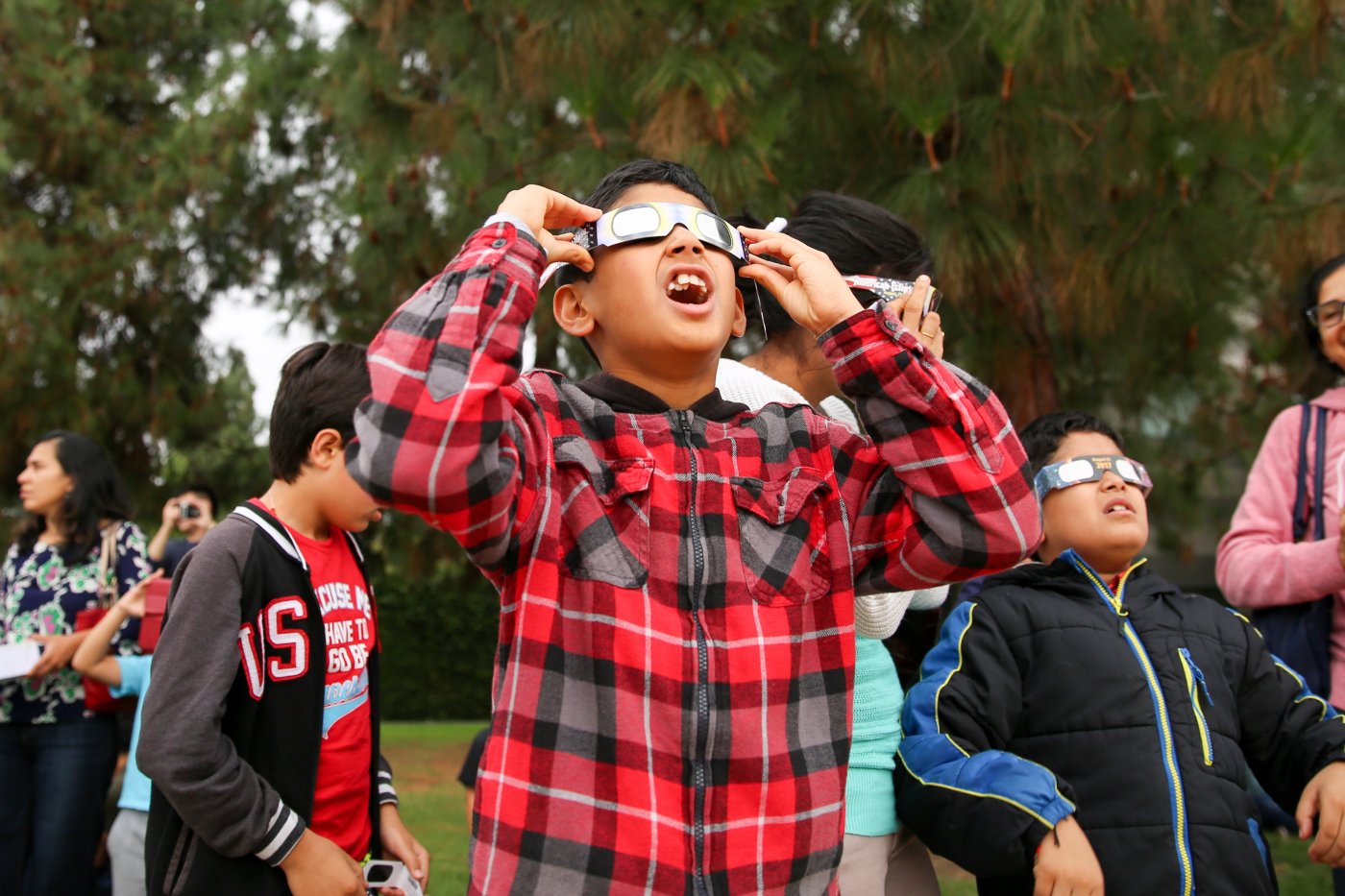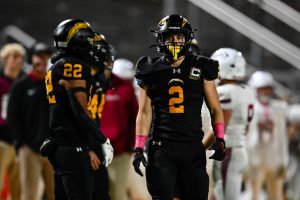Californians may fret that they don’t have a great view of the Great North American Eclipse on Monday, but seeing only part of the action will still be totally worth it.
A solar eclipse takes place when the the sun, moon and Earth align in the sky, casting a narrow shadow that either fully or partially blocks the sun’s light. The eclipse is expected to pass through 13 U.S. states on Monday; although California won’t be in the path of totality, partial solar eclipses can still offer a unique viewing experience.
There are usually two solar eclipses per year, but that number can increase to five in rare circumstances, according to astronomy.com. However, waiting for an eclipse to occur in a specific area can take years. The next time a solar eclipse is expected to pass through California is Aug. 12, 2045, according to KQED.
Anyone in the Bay Area hoping to see a total solar eclipse will have to travel out of state — and maybe the country — to do it; the next time a total solar eclipse will be visible from San Francisco will be Dec. 31, 2252.
Although partial eclipses lack the once-in-a-lifetime feel of a total solar blackout, they give a wider portion of the world a chance to see a spectacular celestial event.
When and where will the eclipse begin?
The eclipse is expected to begin in the Bay Area around 10:14 a.m. PDT, peak at 11:13 a.m. and end by 12:16 p.m.
National Weather Service meteorologist Crystal Oudit said Sunday that the weather should be right for viewing in most Bay Area cities.
“We should not be seeing too many clouds,” she said. “If anything, they will be very high clouds. Some low clouds will be there early, but they should clear by the late morning, and it should be sunny skies.”
In San Francisco and Oakland, about 34% of the sun’s surface will be covered. San Jose will see the moon cover about 36% of the sun’s surface. In Sacramento, 35% of the sun’s face will be covered by the moon.
In Southern California cities like San Diego, Los Angeles and Fresno, the moon will obscure a larger portion of the sun’s surface.
Animals might react differently during the eclipse
The Associated Press reported that researchers will be watching how animals react during the eclipse. During past eclipses, animals tend to act as if it’s early dusk and may take shelter. Because of the darkened sky and temperature drop during the partial solar eclipse, birds’ chirping might quiet and give way to crickets. Researchers also noted that pets may mimic their owners’ reactions to the reduced sunlight.
Viewing the eclipse in-person and online
If you have time and a little extra money to spend, Chabot Space and Science Center in the Oakland hills, the Exploratorium in San Francisco, and Lawrence Hall of Science in Berkeley are holding viewing parties for the eclipse from 10 a.m. to 1 p.m.
San Francisco State University will also have solar viewing equipment set up to let people view the eclipse for free. They will be set up on the plaza at the main entrance to Thornton Hall and one in the quad near Cesar Chavez Student Center. Volunteers with the Mount Diablo Astronomical Society will also be bringing telescopes and eclipse glasses at Danville Library between 10:10 a.m. and 12:15 p.m.
Foothill College also has two eclipse viewing events on campus. The Science Learning Institute will be teaching visitors how to make their own DIY eclipse viewers between 11 a.m. and 12:30 p.m. in the PSEC Quad. Two Foothill Operators with the Peninsula Astronomical Society will also open the Foothill Observatory between 10:30 a.m. and 12:00 p.m. as long as there are good weather conditions.
NASA will also be livestreaming during the eclipse on Facebook, X, YouTube, and Twitch. The organization will also include live coverage with experts describing what’s happening on the agency’s website, starting at 10 a.m. A telescope-only feed of the eclipse will also stream on the NASA TV media channel and YouTube.
Some stores may still be selling solar eclipse glasses
Related Articles
Solar eclipse: Will my cell phone service be disrupted?
Where to get free eclipse glasses in the Bay Area before April 8
Is it safe to fly during the solar eclipse? Here’s what experts have to say
Whether you’re using a fancy camera or a smartphone, here’s how to take great eclipse photos
Solar eclipse: How much will you be able to see in the Bay Area?
Of course, you should be able to see the partial eclipse from wherever you are — but you need to take steps to protect your vision. Experts recommend using solar eclipse safety glasses. Don’t try viewing the eclipse with alternatives, like sunglasses, binoculars or telescopes without special filters, as inadequate protection can damage your retinas and potentially cause blindness.
If you’re in a pinch, stores like Lowes, Walmart and Staples were still offering solar eclipse safety glasses on their online inventories in the days before the big event.
You can still enjoy the eclipse without glasses (but seriously, don’t look directly at the sun)
Crescent shadows are only viewable during partial solar eclipses. You can see them if you look at the ground beneath a leafy tree. As the sunlight shines through the leaves, it casts crescent-shaped shadows on the ground.
Another way to mimic this effect is by using a kitchen colander. With your back to the sun, hold the colander over your shoulder, and the sun’s crescent shape will be projected through the holes.
The Associated Press and Bay Area News Group staff writer Paul Rogers contributed to this report.












